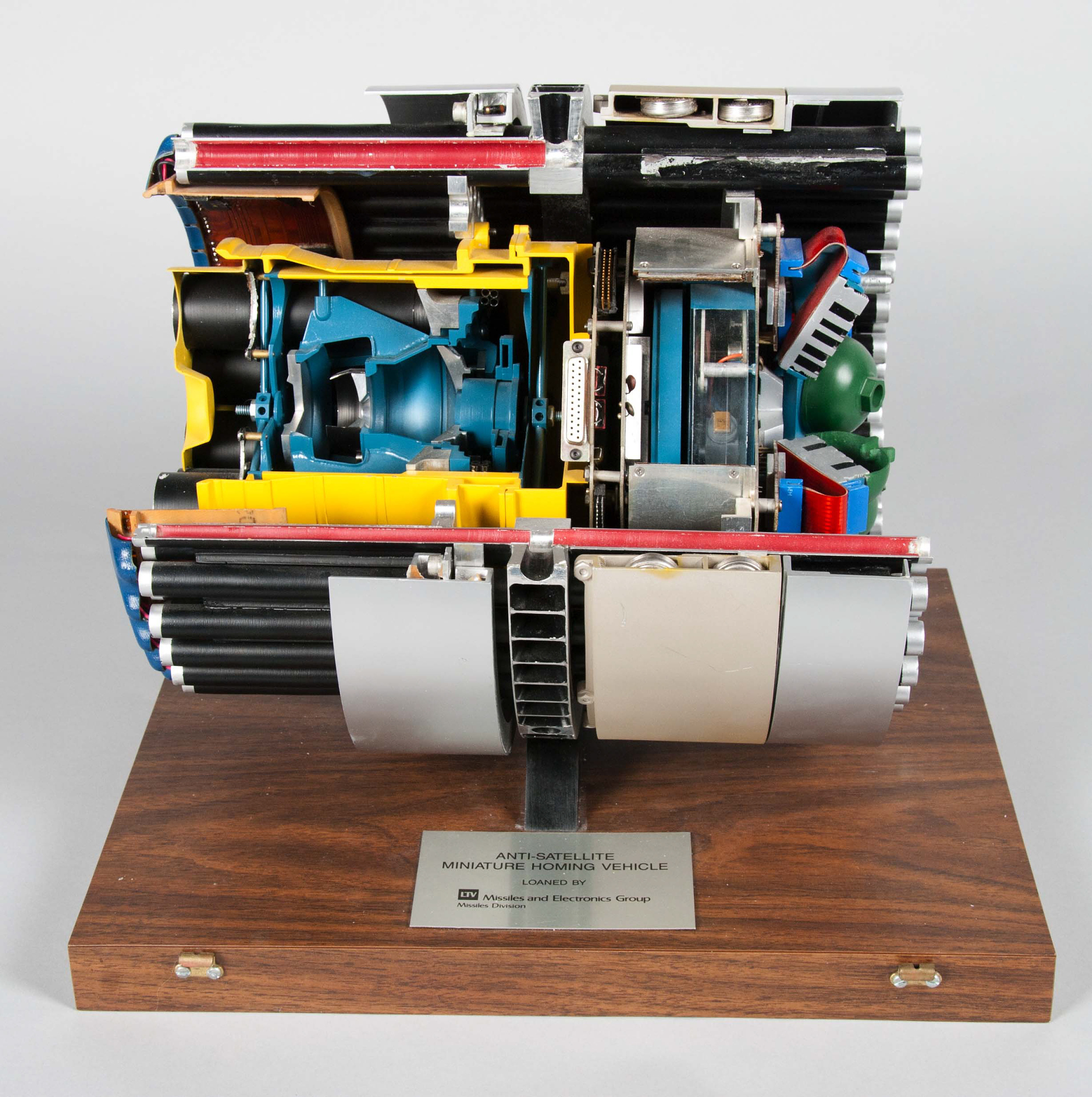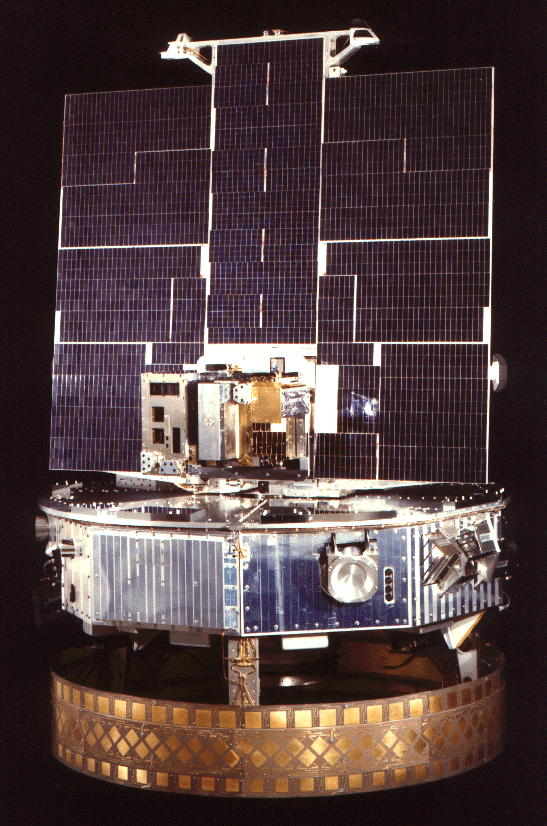Winston
Lorenzo von Matterhorn
- Joined
- Jan 31, 2009
- Messages
- 9,560
- Reaction score
- 1,749
Very impressive little kinetic kill vehicle for managing to successfully use 1980s technology.
ASM-135 ASAT
https://en.wikipedia.org/wiki/ASM-135_ASAT
The kinetic kill vehicle:

The target satellite:
Solwind
https://en.wikipedia.org/wiki/Solwind
By 1985, the satellite's batteries were degrading. This caused more and more frequent "under-voltage cutoffs", a condition where the satellite detected a low main bus voltage and automatically shut down all non-vital systems. In addition, the last of the three tape recorders failed in the spring of 1985, so data collection could only occur while the spacecraft was in contact with a ground station. A normal contact lasted only about 15 minutes, so this was a serious impediment. Special arrangements could be made to string several contacts together. As a result of these failures, an ever-increasing amount of time and network resources were spent reconfiguring the satellite for normal operation. Data collection from the few remaining payloads was severely limited. Because of the additional burden on the Air Force Satellite Control Network (e.g., extra support and antenna time at the tracking stations), discussions were already underway to terminate the mission.
This led to the satellite being chosen as a test target for an ASM-135 ASAT anti-satellite missile. The mission was extended for several weeks solely to support the test. During this final phase, the satellite was often allowed to remain in the under-voltage condition for several days at a time.
On September 13, 1985, the satellite was destroyed in orbit at 2043 UTC at 35°N 126°W with an altitude of 525 kilometres (326 mi) by an ASM-135 ASAT launched from a US Air Force F-15 Eagle fighter aircraft. The test resulted in 285 cataloged pieces of orbital debris. 1 piece of debris remained in orbit to at least May 2004, but had deorbited by 2008.
The test outraged some scientists because although five of P78-1's instruments had failed at the time of the test, two instruments remained in operation, and the satellite was what one solar physicist called "the backbone of coronal research through the last seven years".

ASM-135 ASAT
https://en.wikipedia.org/wiki/ASM-135_ASAT
The kinetic kill vehicle:

The target satellite:
Solwind
https://en.wikipedia.org/wiki/Solwind
By 1985, the satellite's batteries were degrading. This caused more and more frequent "under-voltage cutoffs", a condition where the satellite detected a low main bus voltage and automatically shut down all non-vital systems. In addition, the last of the three tape recorders failed in the spring of 1985, so data collection could only occur while the spacecraft was in contact with a ground station. A normal contact lasted only about 15 minutes, so this was a serious impediment. Special arrangements could be made to string several contacts together. As a result of these failures, an ever-increasing amount of time and network resources were spent reconfiguring the satellite for normal operation. Data collection from the few remaining payloads was severely limited. Because of the additional burden on the Air Force Satellite Control Network (e.g., extra support and antenna time at the tracking stations), discussions were already underway to terminate the mission.
This led to the satellite being chosen as a test target for an ASM-135 ASAT anti-satellite missile. The mission was extended for several weeks solely to support the test. During this final phase, the satellite was often allowed to remain in the under-voltage condition for several days at a time.
On September 13, 1985, the satellite was destroyed in orbit at 2043 UTC at 35°N 126°W with an altitude of 525 kilometres (326 mi) by an ASM-135 ASAT launched from a US Air Force F-15 Eagle fighter aircraft. The test resulted in 285 cataloged pieces of orbital debris. 1 piece of debris remained in orbit to at least May 2004, but had deorbited by 2008.
The test outraged some scientists because although five of P78-1's instruments had failed at the time of the test, two instruments remained in operation, and the satellite was what one solar physicist called "the backbone of coronal research through the last seven years".




